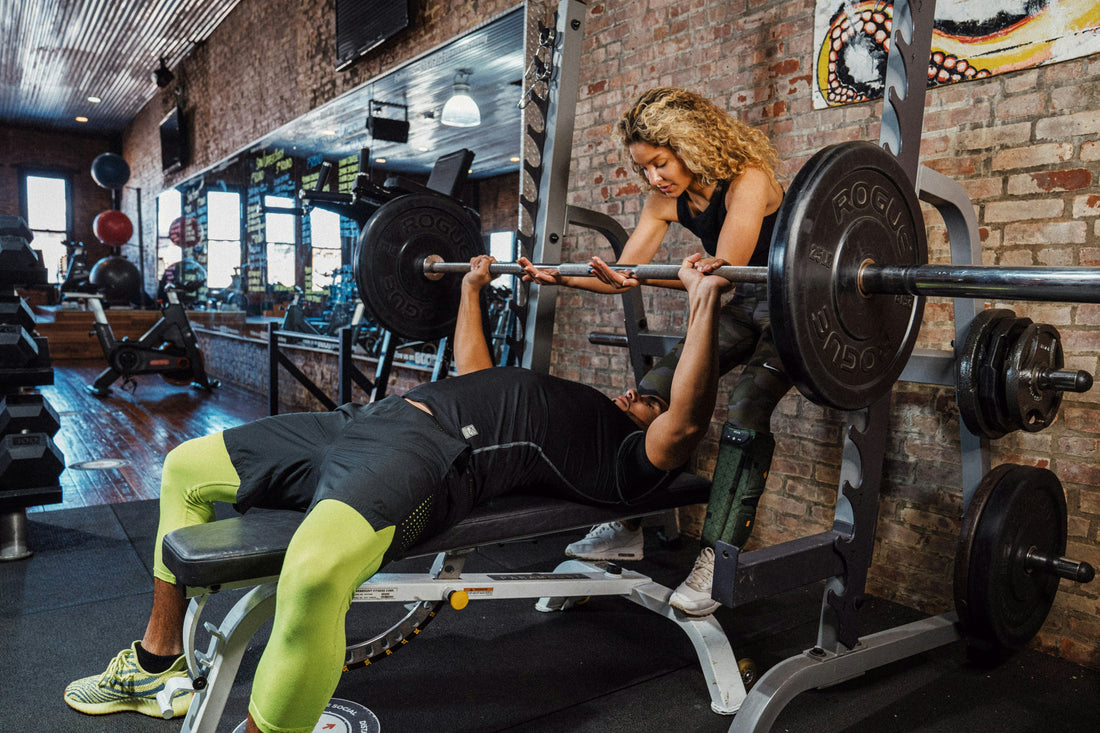
Building a Warrior's Chest: Beyond the Basic Bench Press
Malitia Co.
The bench press is a cornerstone of chest training, but relying solely on this classic movement can limit your progress. To build a warrior's chest—one that's not just strong but also sculpted and balanced—you need a strategic approach that goes beyond the basics. By incorporating a variety of movements, targeting different angles, and focusing on proper activation, you can achieve a chest that exudes power and symmetry.
Quick Navigation
-
The Limitations of the Basic Bench Press
-
Key Components of a Warrior's Chest Training Plan
-
Advanced Chest Exercises for Explosive Growth
-
Actionable Tips for Building a Warrior's Chest
-
Pitfalls and How to Avoid Them
- Forge a Warrior's Chest
The Limitations of the Basic Bench Press
While the bench press is excellent for building overall strength and mass in the chest, it has its shortcomings:
-
Limited Range of Motion: The barbell restricts the chest's full stretch and contraction.
-
Over-Reliance on Triceps and Shoulders: Without proper form and focus, secondary muscles can dominate the movement.
-
Neglect of the Upper and Lower Chest: Flat bench presses primarily target the mid-portion of the chest, leaving other areas underdeveloped.
- Plateau Potential: Sticking to one movement can lead to stagnation and slow progress.
To build a complete chest, you need to diversify your training and address these limitations.
Key Components of a Warrior's Chest Training Plan
1. Target All Areas of the Chest:
-
Upper Chest: Incline presses and flys to emphasize the clavicular head.
-
Middle Chest: Flat presses for overall mass and strength.
-
Lower Chest: Decline presses and dips for balance and fullness.
- Inner and Outer Chest: Fly variations to enhance shape and definition.
2. Incorporate Compound and Isolation Movements:
- Compound lifts (e.g., presses and dips) build strength and mass.
- Isolation exercises (e.g., flys and cable movements) refine shape and focus on individual muscle fibers.
3. Use Free Weights, Machines, and Cables:
- Free weights promote stabilization and a natural range of motion.
- Machines offer constant tension and safety for heavy lifting.
- Cables provide versatility and the ability to work muscles through unique angles.
4. Prioritize Time Under Tension:
- Controlled eccentric phases (lowering the weight) and deliberate contractions maximize muscle activation.
- Incorporate techniques like drop sets, pause reps, and tempo training to increase intensity.
5. Master the Mind-Muscle Connection:
- Visualize your chest working during each rep, focusing on squeezing the muscle at the peak of the movement.
- Avoid letting the shoulders and triceps take over.
Advanced Chest Exercises for Explosive Growth
-
Incline Dumbbell Press: Targets the upper chest while allowing for a deep stretch and full range of motion.
-
Decline Dumbbell Press: Focuses on the lower chest and reduces shoulder involvement.
-
Low-to-High Cable Flys: Isolates the upper chest and creates a fuller look.
-
Dumbbell Pullover: Stretches the chest and enhances ribcage expansion.
-
Weighted Dips (Chest-Focused): Builds the lower chest and triceps with bodyweight or added resistance.
-
Squeeze Press: Activates the inner chest by pressing dumbbells together throughout the lift.
-
Landmine Press: A functional movement targeting the upper chest and shoulders.
- Deficit Push-Ups: Elevates your hands to increase range of motion, emphasizing chest activation.
Actionable Tips for Building a Warrior's Chest
-
Warm-Up Effectively: Use dynamic stretches and light isolation exercises to prepare your chest for heavier lifts.
-
Start with Compound Movements: Begin your session with heavy presses or dips to build strength when your energy is highest.
-
Use Progressive Overload: Gradually increase the weight, reps, or intensity to keep challenging your muscles.
-
Train Across the Spectrum: Include flat, incline, and decline movements to ensure balanced development.
- Incorporate Isolation at the End: Finish your workout with flys, cable movements, or high-rep sets to refine and fatigue the chest.
Pitfalls and How to Avoid Them
Over-Reliance on Heavy Weight:
-
Problem: Focusing too much on lifting heavy can compromise form and reduce chest activation.
- Solution: Prioritize proper technique and mind-muscle connection over sheer load.
Neglecting Angles and Variety:
-
Problem: Repeatedly performing the same exercises limits muscle growth and creates imbalances.
- Solution: Rotate exercises and adjust bench angles to target all areas of the chest.
Skipping Warm-Ups:
-
Problem: Cold muscles are more prone to injury and less responsive to heavy lifting.
- Solution: Warm up with light weights and activation drills to prepare your chest.
Poor Recovery Habits:
-
Problem: Overtraining or inadequate recovery hinders progress.
- Solution: Allow 48–72 hours between chest workouts and ensure proper sleep, nutrition, and hydration.
Forge a Warrior's Chest
Building a chest worthy of a warrior requires more than brute strength—it demands a strategic approach that blends heavy lifting, targeted movements, and precise activation. By going beyond the basic bench press and embracing a variety of exercises and techniques, you'll develop a chest that's as powerful as it is sculpted. Stay consistent, train smart, and transform your chest into a true symbol of strength and resilience.